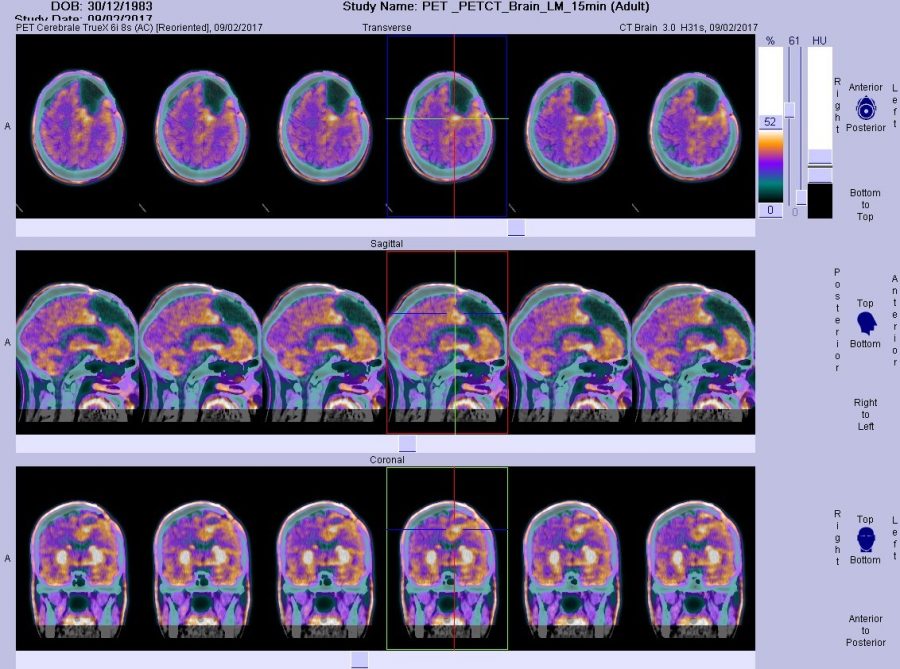Zika Virus Versus Cancer
This is a PET scan of Glioblastoma cancer in a patient, the Zika virus could be a cure.
What do you get if you cross a devastating disease and a persistent cancer? A cure. At least that is what scientists hope after reviewing numerous studies, articles, and experiments. Glioblastoma tumor cells can be killed by the Zika virus. It has yet to be tested as a type of treatment on a real patient, but if scientists get positive results this would be a turning point in modern medicine. But what exactly is the Zika virus? The Zika virus s a disease carried by mosquitoes living in tropical areas, according to Rare Disease Report. RDR states that the Zika virus, “can lead to devastating neurological problems, in babies, when expecting mothers are bit by the mosquito.” Microcephalyas as well as brain and spinal cord infections are results of the Zika virus affecting babies after birth. Finding cures for cancer has been a race against time which, so far, has not been all that successful. “The idea of using the Zika virus to treat a cancer was largely based in the finding of what the Zika virus can and cannot do to brain cells in humans,” Rare DR claims. Another study found that the Zika virus can both infect and kill glioblastoma stem cells, meanwhile it spares normal neuronal cells. This means that the Zika virus will kill the cancerous cells in the brain, leaving the healthy, normal, ones alone. Glioblastoma is the most common type of brain cancer in the United States, Gears of Biz claims. It can comeback within months of having aggressive chemotherapy, radiation as well as therapy, Gears of Biz states. Fox News further explains that, “glioblastoma has a five-year survival rate of only five percent.”
But now scientists have found a cure: The Zika virus. Gears of Biz explains that, “standard forms of therapy can do well against the majority of the tumor cells.” But they do end up leaving behind the stem cells that generate the tumors. This allows them to create even more tumors, Gears of Biz states. “But once the originals are removed Zika actually does the opposite. It can target the stem cells and skip over the other tumor cells so using the two different treatments would work quite well when used together,” Gears of Biz says.
The National Institutes of Health claims that a new laboratory study, supported by the National Institute of Allergy and Infectious Diseases, tested the Zika virus on Glioblastoma cells in mice and on human tissue. The NIH claims that researchers at the University of California San Diego School of Medicine, the Cleveland Clinic, the Washington University School of Medicine in St. Louis, and the University of Texas Medical Branch in Galveston all participated in this study. “After seven days, the researchers found that the Zika virus has replicated in certain glioblastoma cells and prevented them from multiplying while the ordinary neural tissue cultures remained largely unaffected,” NIH states. These were exactly the results scientists were hoping to see. The Zika virus managed to affect the mice positively as well, “their tumors were significantly smaller than those in the control mice after one week.”
Overall tests proved that the Zika virus would be a big help in modern science, it could indeed kill glioblastoma cells. Patients who only had a five-year five percent chance of living can expect to see effective cures very soon. Although this is only one type of cancer it is a big step for scientists.






